The first (Δi,H1) and the second (Δ,H2) ionisation enthalpies (in kJ mol−1 ) and the (ΔegH) electron gain enthalpy (in kJ mol−1 ) of a few elements are given below :
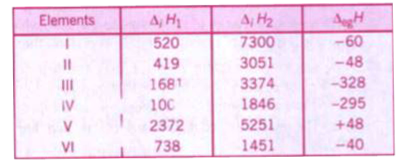
Which of the above elements is likely to be :
a reactive metal
Element I. Since it has low first ionisation enthalpy and a very high value for second ionisation enthalpy, it is expected to be an alkali metal. It should be Li (lithium) as it forms predominantly stable covalent halides of the formula MX.
Topper's Solved these Questions
- CLASSIFICATION OF ELEMENTS AND PERIODICITY IN PROPERTIESBook:ICSEChapter:CLASSIFICATION OF ELEMENTS AND PERIODICITY IN PROPERTIESExercise:ASSERTION-REASON TPE QUESTIONS
Explore 6 Videos
- CHEMICAL THERMODYNAMICS Book:ICSEChapter:CHEMICAL THERMODYNAMICS Exercise:NCERT TEXT-BOOK. EXERCISES
Explore 22 Videos
- ENVIRONMENTAL CHEMISTRY Book:ICSEChapter:ENVIRONMENTAL CHEMISTRY Exercise:NCERT TEXT-BOOK EXERCISE
Explore 20 Videos
Similar Questions
The first (Δi,H1) and the second (Δ,H2) ionisation enthalpies (in kJ mol−1 ) and the (ΔegH) electron gain enthalpy (in kJ mol−1 ) of a few elements are given below :
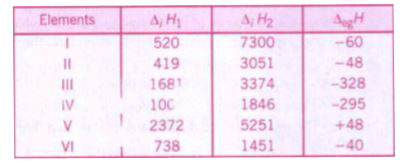
Which of the above elements is likely to be :
the least reactive element?
View SolutionThe first (ΔH1) and second (ΔH2) ionisation enthalpies (in kJmol−1) and the (ΔHeg) electron gain enthalpy (in kJmol−1) of a elements are given below:
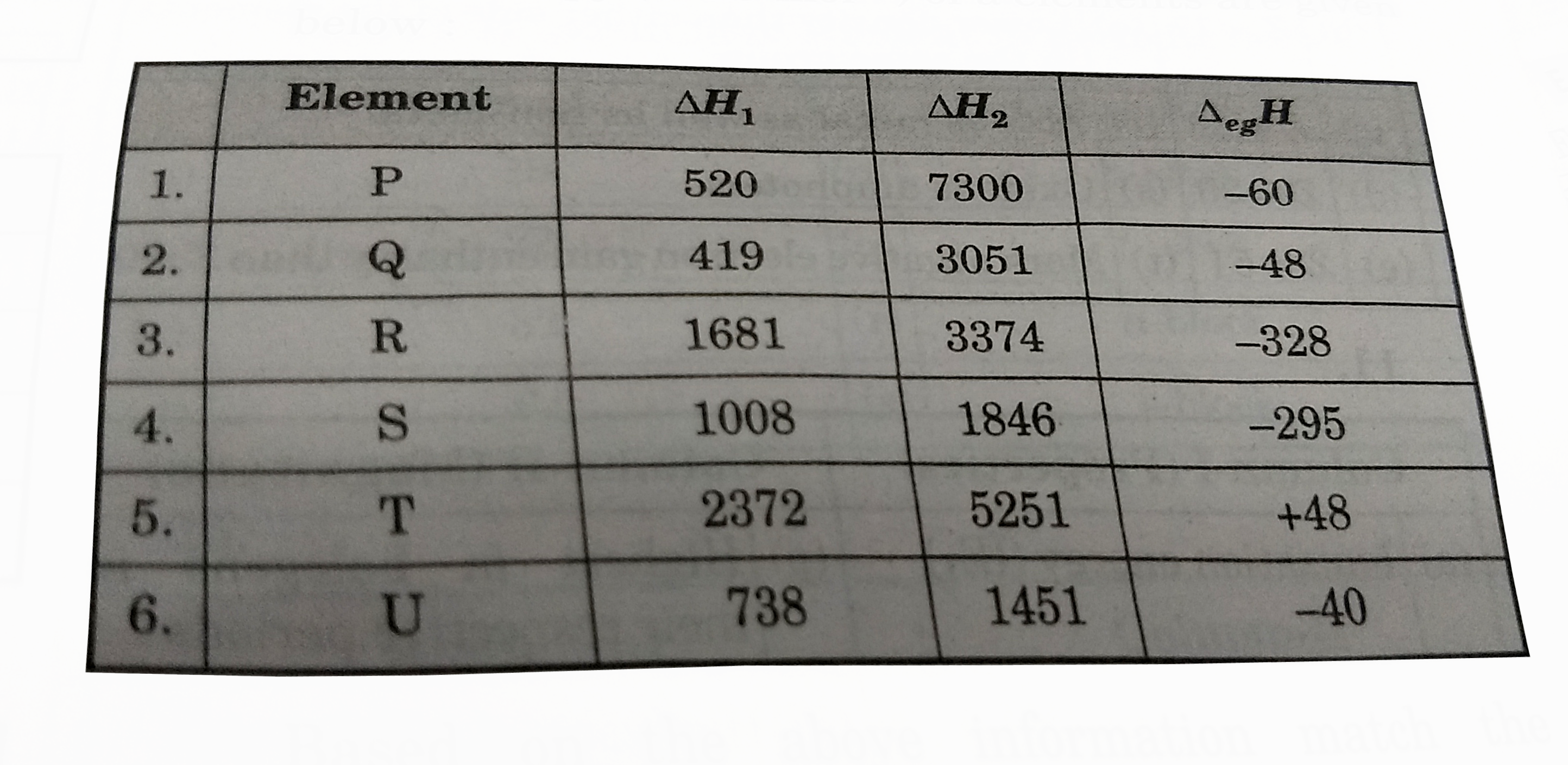
Based on the above information match the following columns.
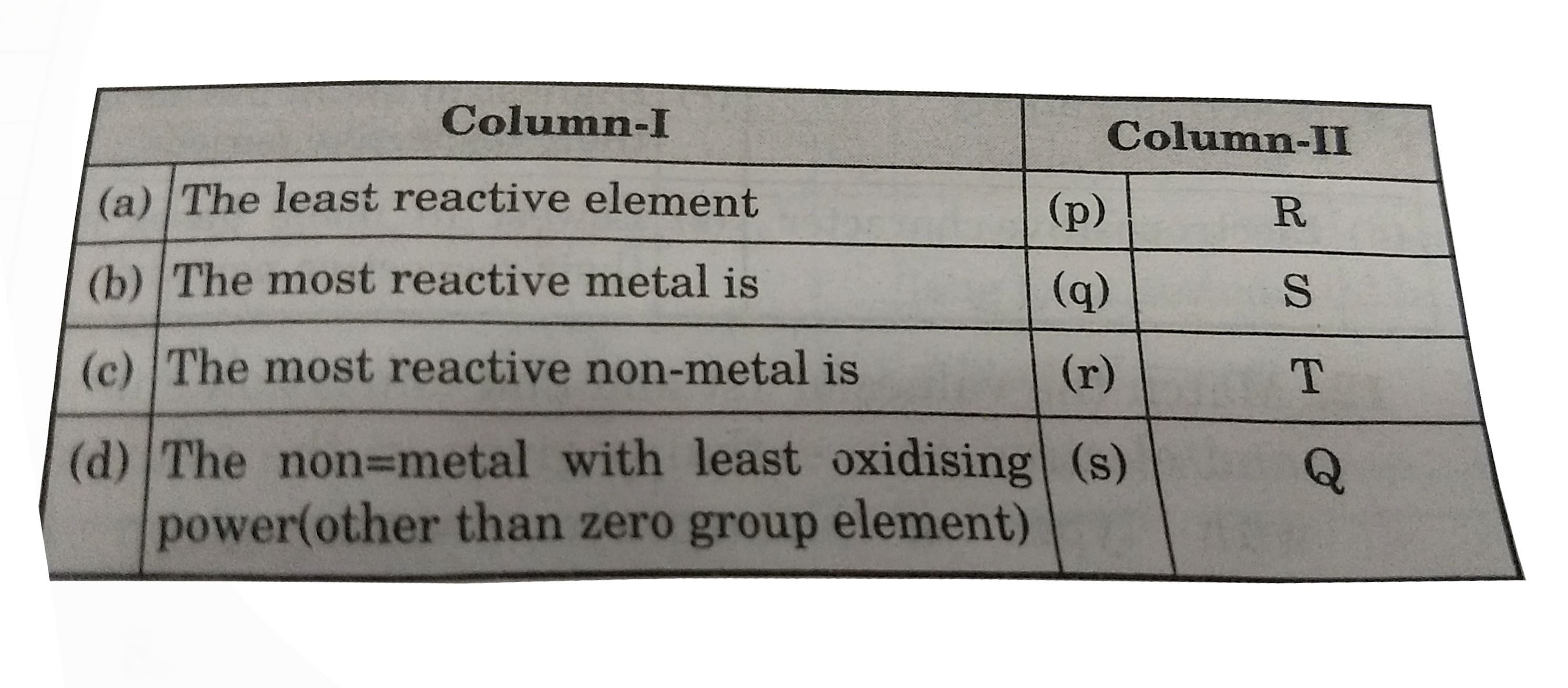
View SolutionThe first (IE1) and the second (IE2) ionisation energies (kJ mol−1) of a few elements are given below :
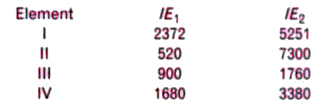
Which of the above elements is likely to be
a reactive metal?
View SolutionThe first (IE1) and the second (IE2) ionisation energies (kJ mol−1) of a few elements are given below :

Which of the above elements is likely to be
a reactive non-metal?
View SolutionThe first (IE1) and the second (IE2) ionisation energies (kJ mol−1) of a few elements are given below :
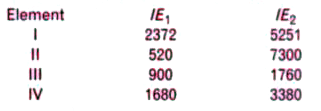
Which of the above elements is likely to be
a noble gas?
View SolutionThe first (ΔiH1) and second (ΔiH2) ionisation enthalpies (inkJmol−1) and the (ΔegHө) electron gain enthalpy (inkJmol−1) of a few elements are given below:
Elements(ΔiH1)(ΔiH2)ΔegHөI5207300−60II4193051−48III16813374−328IV10081846−295V23725251+48VI7381451−40
Which of the above elements is likely to be
a. the least reactive element.
b. the most reactive metal.
c. the most reactive non-metal.
d. the least reactive non-metal.
e. the metal which can form a stable binary halide of the formula MX2 (X=halogen).
f. the metal which can form a predominantly stable covalent halide of the formula MX(X=halogen).
View SolutionFirst and second ionisation enthalpies(in KJ/mol) of few elements are given below:
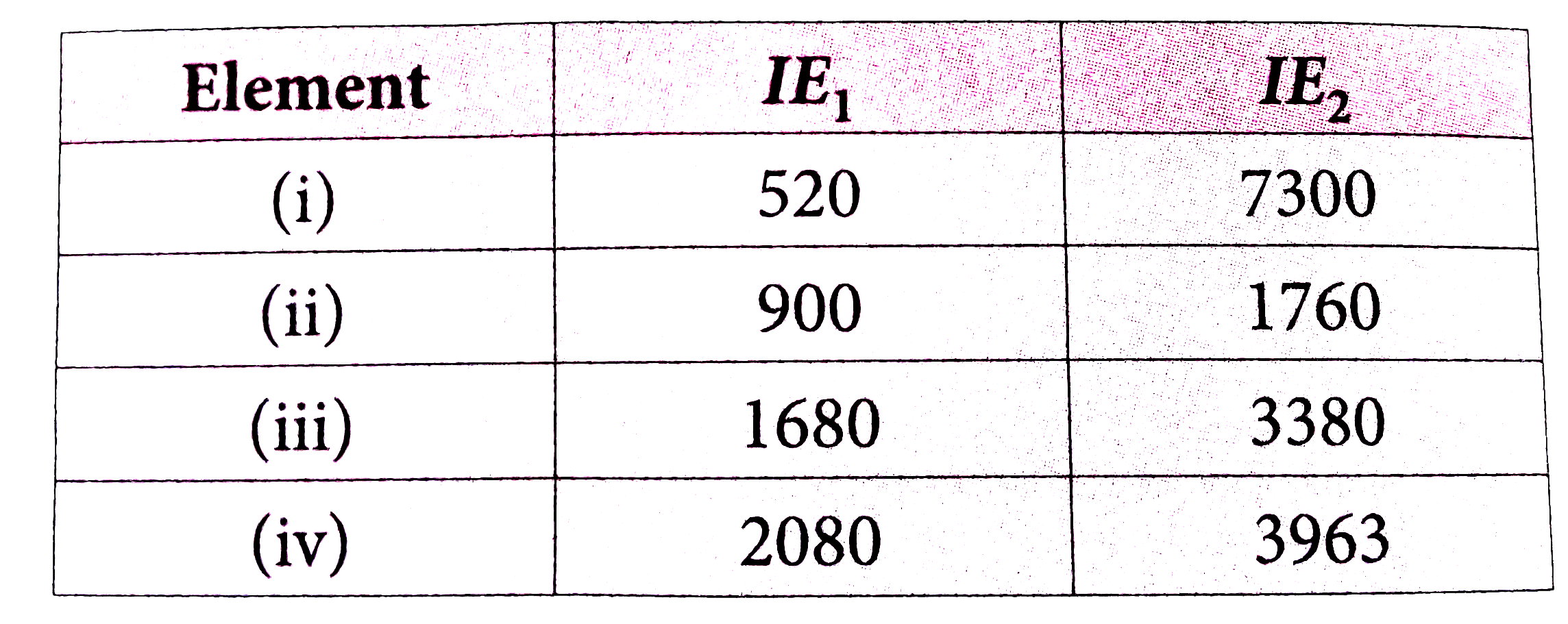
Which of the above elements will form halides with formula MX2?
View SolutionThe first and second ionization enthalpies and electron gain enthalpy of some elements are as given below:

Which of these elements is the most reactive metal?
View SolutionThe first and second ionization enthalpies and electron gain enthalpy of some elements are as given below:
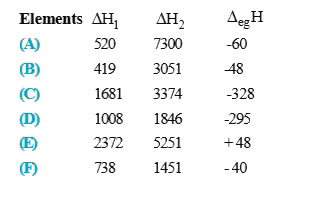
Which of these elements is the least reactive non-metal?
View SolutionThe second electron gain enthalpies (in kJ mol−1) of oxygen and sulphur respectively are:
View Solution